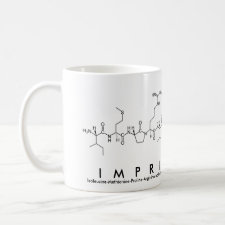
Authors: Liu XF, Zhou J, Chen CB
Article Title: Transport selectivity of tribenuron-methyl imprinted polymer nanowire membrane prepared using N,O-bismethacryloyl ethanolamine as a functional crosslinking monomer.
Publication date: 2010
Journal: Journal of Applied Polymer Science
Volume: 118
Issue: (2)
Page numbers: 678-684.
DOI: 10.1002/app.32456
Abstract: Using tribenuron-methyl as a template and N,O-bismethacryloyl ethanolamine as a functional crosslinking monomer, a molecularly imprinted nanowire membrane was prepared over an anodic alumina oxide membrane. The nanowire fabric of the imprinted membrane was established with a scanning electron microscope and a transmission electron microscope. However, the nonimprinted particulate membrane is formed in the absence of a template. Scatchard analysis showed that an equal class of binding sites were formed in the imprinted nanowire membrane and the dissociation constant and the maximum number of these binding sites were estimated to be 1.44 × 10-5 M and 22.7 μmol/g, respectively. The permeation experiments throughout the imprinted membrane and the nonimprinted one were carried out in a solution containing the template and its competitive analogs. These results demonstrated that the molecularly imprinted nanowire membrane exhibited higher transport selectivity for the template tribenuron-methyl than its analogs, chlorimuron-ethyl, thifensulfuron-methyl and N-(4-bromophenylcarbamoyl)-5-chloro-1H-benzo[d]imidazole-2-carboxamide. But the nonimprinted granular membrane had no permselectivity for the four substrates. © 2010 Wiley Periodicals, Inc. J Appl Polym Sci, 2010
Template and target information: tribenuron-methyl
Author keywords: tribenuron-methyl, N,O-Bismethacryloyl ethanolamine, molecularly imprinted nanowire membrane, Transport selectivity



Join the Society for Molecular Imprinting

New items RSS feed
Sign-up for e-mail updates:
Choose between receiving an occasional newsletter or more frequent e-mail alerts.
Click here to go to the sign-up page.
Is your name elemental or peptidic? Enter your name and find out by clicking either of the buttons below!
Other products you may like:
 MIPdatabase
MIPdatabase









